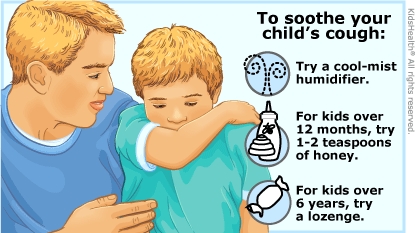Kids with a flu-like illness may have a fever, cough, sore throat, headache, body aches, and other symptoms. It is caused by a virus (a type of germ). It’s called “flu-like” because its symptoms are similar to those of influenza (“the flu”), but may not be caused by the same virus.
Most kids and teens with a flu-like illness feel better within 1 to 2 weeks.



Your child:

Your child:

How does a flu-like illness spread? Viruses that cause flu-like illnesses spread from person to person. They can spread when a person with the virus coughs and/or sneezes the virus into the air and someone else breathes it in. Viruses also can spread when someone touches the virus on another person or a hard surface (such as a doorknob), and then touches their own eyes, nose, or mouth.
To help reduce the spread of viruses, teach kids to:
During the coronavirus pandemic, experts found that wearing masks can help protect the community from the spread of COVID-19. Wearing masks can also help stop the spread of flu and other flu-like illnesses.
Is there treatment for a flu-like illness? Antiviral medicines are available to treat some types of viruses. Antibiotics will not treat a flu-like illness because it is caused by a virus. Antibiotics only work against bacteria, not viruses.
Should my child still get the flu vaccine? Yes, your child should still get the flu vaccine. Although a child who gets the flu vaccine still might get the flu, the illness is likely to be less serious.